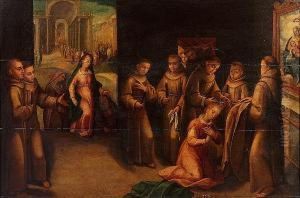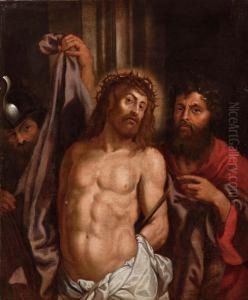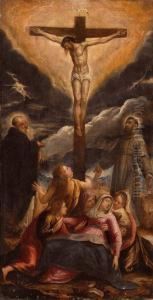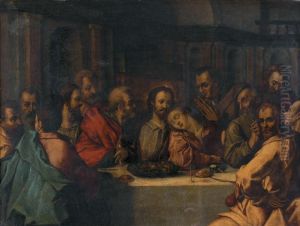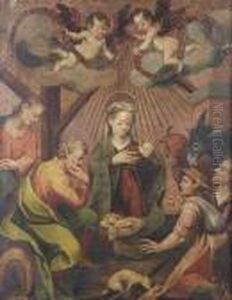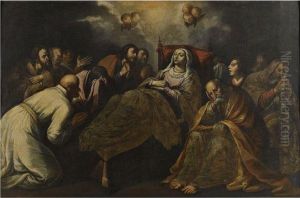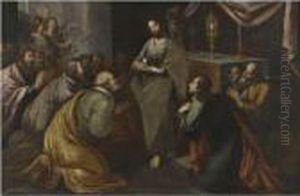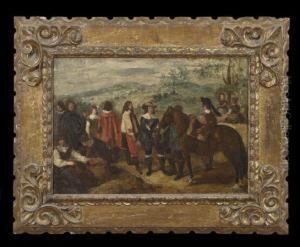Francesco Pacheco Paintings
Francesco Pacheco was a significant figure in the Spanish Renaissance, known not just for his contributions to painting but also for his work as a teacher, scholar, and writer on art. Born in Sanlúcar de Barrameda, Spain, in 1564, Pacheco grew to prominence in Seville, a city that became a vibrant artistic center during the late 16th and early 17th centuries. His life and work bridged the transition from the Mannerist to the Baroque style in Spanish art, reflecting the complex religious and cultural transformations of his time.
Pacheco's art was deeply influenced by his devout Catholic faith, which is evident in the religious themes that dominate his works. He was particularly noted for his precise and detailed iconography, often incorporating theological symbols and texts, which made his paintings not only works of art but also visual sermons. His approach to art was intellectual, rooted in his belief that painting was a science as much as an art, a viewpoint he elaborated on in his treatise, 'Arte de la Pintura' (The Art of Painting), completed in 1649. This work remains a valuable source for understanding the theory and practice of Spanish art of the period, as well as Pacheco's own principles and techniques.
Moreover, Francesco Pacheco is remembered for his role as a teacher. His studio in Seville attracted many young artists who would come to define Spanish painting in the 17th century, including Diego Velázquez, who married Pacheco's daughter, Juana, and Alonso Cano, among others. Pacheco was more than a teacher; he was a mentor who imparted a rigorous academic foundation, emphasizing the importance of drawing and the study of nature, alongside a deep engagement with the intellectual and spiritual dimensions of art.
Pacheco's influence extended beyond his immediate circle through his writings and his involvement in the intellectual and ecclesiastical debates of his time. He served as an official examiner of sacred images for the Inquisition in Seville, a role that allowed him to exert considerable influence over the visual culture of Spanish Catholicism, enforcing doctrinal orthodoxy in art at a time when the Counter-Reformation sought to harness the arts as a tool for religious reform and consolidation.
Francesco Pacheco passed away in 1644 in Seville, leaving behind a legacy that was not just the product of his own paintings, but also the impact he had on the generations of artists he trained and influenced. His work and thought encapsulate the complexities of Spanish art during a period of significant transition, reflecting a deep engagement with the religious, intellectual, and aesthetic currents of his time.
